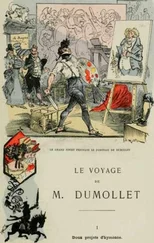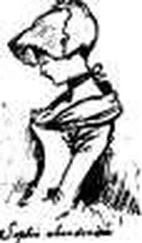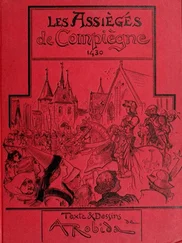Albert Robida - Yester-year; ten centuries of toilette from the French of A. Robida
Здесь есть возможность читать онлайн «Albert Robida - Yester-year; ten centuries of toilette from the French of A. Robida» весь текст электронной книги совершенно бесплатно (целиком полную версию без сокращений). В некоторых случаях можно слушать аудио, скачать через торрент в формате fb2 и присутствует краткое содержание. Жанр: Старинная литература, на английском языке. Описание произведения, (предисловие) а так же отзывы посетителей доступны на портале библиотеки ЛибКат.
- Название:Yester-year; ten centuries of toilette from the French of A. Robida
- Автор:
- Жанр:
- Год:неизвестен
- ISBN:нет данных
- Рейтинг книги:4 / 5. Голосов: 1
-
Избранное:Добавить в избранное
- Отзывы:
-
Ваша оценка:
- 80
- 1
- 2
- 3
- 4
- 5
Yester-year; ten centuries of toilette from the French of A. Robida: краткое содержание, описание и аннотация
Предлагаем к чтению аннотацию, описание, краткое содержание или предисловие (зависит от того, что написал сам автор книги «Yester-year; ten centuries of toilette from the French of A. Robida»). Если вы не нашли необходимую информацию о книге — напишите в комментариях, мы постараемся отыскать её.
Yester-year; ten centuries of toilette from the French of A. Robida — читать онлайн бесплатно полную книгу (весь текст) целиком
Ниже представлен текст книги, разбитый по страницам. Система сохранения места последней прочитанной страницы, позволяет с удобством читать онлайн бесплатно книгу «Yester-year; ten centuries of toilette from the French of A. Robida», без необходимости каждый раз заново искать на чём Вы остановились. Поставьте закладку, и сможете в любой момент перейти на страницу, на которой закончили чтение.
Интервал:
Закладка:
Was it in reprisal for the war in America, that the monarchy was invaded by British fashions during the last years of its existence ? The shapes were new, and, both in general outlines and in detail, the preceding fashions were disregarded. Dress assumed unceremonious airs and an English ' cachet,' which implied a new régime. The ' only wear ' included vests, jackets with waistcoats, ' frocks ' with big buttons or laced, and ' driving coats ' with large lapels and triple collars, tight to the figure and very long at the back. The large and showy buttons of the vests were in metal of every kind and shape, and sometimes adorned with little pictures ; there are curious samples of these in various collections.
Women as well as men of fashion wore two watches with two long' chains hançrino- from the waistcoat ; they also wore cravats, Cadogans, and

Eoglish fashions.
' clubs ' like men, and carried long canes, while men took kindly to the women's big muffs. And the fichu ! All women wore, with every
kind of dress, large fichus, which swelled out the chest to an unnatural extent above the long and horribly-squeezed waist.
These costumes hoisted all the colours of the rainbow, the lightest, the brightest, the strangest ; there were satins, silks, and cloths of lemon colour, pink, apple green, canary, shot Indian silks, muslins, either plain or striped, of every possible tint. Stripes had an immense success in 1787. During the summer of that year, men, women, and children, all wore striped costumes.
Head-dressing also joined the revolutionary movement. The birth of the modern bonnet was at hand, head-costume, as understood by the nineteenth century, was about to develope itself. Women were still powdered, and still wore an immense quantity of hair in enormous wigs which bulged out around their faces, in tlie style of the masculine peruke, with big curls hanofiuCT at either side of the neck and down the back, or, like men, a thick club or Cadogan behind the head. Hats were of extraordinary shapes and dimensious, with immense brims, and enormous crowns laden with an extravagant quantity of trimming. A frigate in full sail
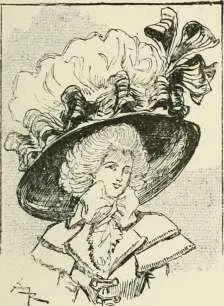
The bounet-hat.
was no longer worn on tlie head, but a boat, keel upward, put on sideways, and big enough to serve as an umbrella on occasion, was the height of fashion.
The bonnet-hat, and the demi-bonnet, a little smaller, but of the same height, were trimmed with bows of ribbon, ruches, and tufts of cock's feathers. The turban-hat, a tall Janissary's cap, was striped, plumed, and trimmed with a gauze scarf; the hat, called for the sake of the satirical pun, ' à la Caisse d'escompte,' because it was ' sans fonds,' was made of open straw, the hat which came into fashion after ihe affair of the Necklace, and was called 'Cardinal sur la paille ' (à propos of Cardinal de Rohan), made of straw edged with ribbon of Cardinal red. The big hat ' à la Tarare/ the ' Basile,' invented after the success of Beaumarchais, and many other fashions à la Figaro, the ' Widow of Malabar,' the Montgolfier cap, the ' Fixed Globe,' the ' Balloon '— these latter in honour of the first aerostatic experiments which made the sensation of the moment—preceded tlie cap 'of the Three Orders,' with which the long series of revolutionary fasliions began, on the Assembly of the States-General.
In this eighteenth centurv, which was nearing
SO dismal a close, there were, besides the belles of the Court and the capital, the more or less great ladies — for the demi-monde already

existed—the famous dancers, and the celebrated courtesans, besides the queens of fashion who went to Longchamps attended by a turbaned footman to carry their parasols, and preceded by a running footman in tights and a plumed cap, with a long gold-tipped cane in his hand, besides the bedizened dames who followed every freak of the capricious mode, many charming women of the bourgeoisie,—we may trace them in old portraits, and in the minor Memoirs—who did not cover themselves with feathers and lace, but dressed with taste and discretion, following fashion at a wise distance, and discreetly preserving the old traditions and the old attire.
These were the fair women who wore little coifs, so different from the pyramids of hair and trumpery built up by Léonard, exquisitely becoming and pretty under a hood stiffened with wire ; these were the women who wore modestly-cut gowns and small hoops, and who eschewed furbelowed paniers twenty feet in circumference.
These were the women who retained the purity of the good old ways and morals, in a licentious age, who led calm and dutiful lives, treading the narrow paths of household occupations and simple pleasures, going to their religious duties on Sundays and feast-days, and to such homely entertainments and country-
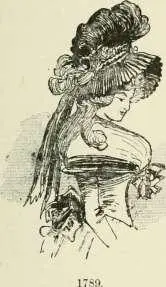
parties as came in due -course in their quiet existence.
Theirs, too, was a world nearing its end, in the fusion and confusion of classes in the great revolutionary caldron, first in the political. and afterwards in the industrial and scientific revolution, that vast upturning and overthrow which was to result for us all in the feveiisli and breathless life of our own epoch.
Meanwhile, the women on whom we turn a passing glance, the worthy, simple women of the lesser bourgeoisie, never dreamed of the troublous time that was so near, saw nothing of that terrible blood-cloud, which was gathering upon the horizon, but would sing with light hearts to their harpsichords in their little wliite salons some pretty little sentimental air, very different from our complicated musical logarithms.
Plaisir d'amour ne dure qu'un moment, Chacjriu d'amour dure toute la vie.

Charlotte Corday Cap.
X.
THE REVOLUTION AND THE EMPIRE.
Fashions called 'à la Bastille' —Fashions of the Revolution — Notre - Dame de Thermidor — 'Incroyables' and 'Merveilleuses' —Antiquity in Paris—' Athenian ' and ' Roman ' women—A pound of clothes — Transparent tunics—Tights, bracelets, and buskins —• The reticule or ridicule— ' Tlie Victims ' Ball—Blonde wigs and dog's ears—' A la Titus'—'Robes-fourreau'^—Little caps and Hats— Shakos—Turbans.
The hurricane which was destined to sweep as a cyclone over our ancient Europe for twenty-five years, ah-eady blew upon Paris, whence it took its origin, shaking and demolishing all before it. A monarchy that had lasted for centuries was about to fall amidst the débris of the old order, like a Bastille or a house of cards.
During this time, while the slaughterers were carrying heads about on pikes, while the new masters of France at the Assembly or the Commune were deciding the fate of millions of men about to be set in battle array, while already, in that ominous dawn of a new age, the new queen, the Guillotine, had risen in her might and spread her blood-red arms over her people, imperturbable Fashion was busy with fresh contrivances, altering the cut of skirts, arrano^ing bodices, twisting ribbons into previously-unknown knots, inventing idyllic toilettes of exquisite novelty, for must not a new nation have new costumes ?
Читать дальшеИнтервал:
Закладка:
Похожие книги на «Yester-year; ten centuries of toilette from the French of A. Robida»
Представляем Вашему вниманию похожие книги на «Yester-year; ten centuries of toilette from the French of A. Robida» списком для выбора. Мы отобрали схожую по названию и смыслу литературу в надежде предоставить читателям больше вариантов отыскать новые, интересные, ещё непрочитанные произведения.
Обсуждение, отзывы о книге «Yester-year; ten centuries of toilette from the French of A. Robida» и просто собственные мнения читателей. Оставьте ваши комментарии, напишите, что Вы думаете о произведении, его смысле или главных героях. Укажите что конкретно понравилось, а что нет, и почему Вы так считаете.

